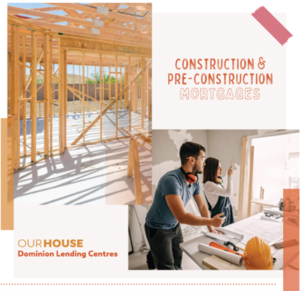 5 Reasons You Don’t Qualify for a Mortgage.
5 Reasons You Don’t Qualify for a Mortgage.
When it comes to shopping for a mortgage, it is important to know what you need to qualify – but it is just as important to understand some of the reasons why you DON’T qualify so that you can make some changes and budget accordingly for when the time is right.
If you are in the market for a home, make sure you know the 5 major reasons you may not qualify for a mortgage:
1. Too Much Debt
One of the biggest reasons that individuals fail to qualify for a mortgage is that they are carrying too much debt already. This debt can be in the form of credit cards, lines of credit or other loans. Regardless of where the debt comes from, it all contributes to your Total Debt Servicing ratio (TDS), which is one of the qualifiers for a mortgage loan. The goal is for your monthly debt payments to NOT exceed 40% of your gross monthly income.
PRO TIP: Find ways to lessen your expenses, budget or consolidate debt where possible.
2. Credit History
Another indicator of not qualifying for a mortgage can be your credit history. It is always important to pull your credit score before you start house hunting so that you can understand what your credit rating is to help determine what you qualify for. Your credit score is a direct reflection of your potential risk and, if you have a poor credit history then it makes it harder to secure a mortgage loan.
PRO TIP: To improve your credit score, be sure to avoid late or missed payments, exceeding your credit card limit or applying for multiple new credit cards.
3. Insufficient Assets or Income
With rising housing prices and stagnant income levels, one roadblock for mortgage approval can be lacking sufficient income or assets to put against your loan. For some buyers, the only option is to save up more money for your down payment to reduce the overall mortgage or look at suite income or alternative lenders.
4. Not Enough Down Payment
Another reason you may not qualify for a mortgage could be that you do not have enough of a down payment. In Canada, a 20% down payment is required to avoid mortgage default insurance BUT you can still purchase a home with less than 20%; you simply need to account for the insurance premiums, which are calculated as a percentage of the loan and is based on the size of your down payment.
5. Inadequate Employment History
Lastly, employment history can have a big impact on mortgage approval. Most lenders prefer a 2-year consistent employment history. If you do not have an adequate employment history, have been at your job for a short time or do not have a record of long-term positions, you might find it harder to get a mortgage loan.
Whether you’re looking to get your first mortgage, are ready to move or are simply shopping around, understanding what can impact your mortgage application will help ensure you have greater success!
If you are struggling currently with your mortgage approval or have recently been denied – that’s okay! Don’t be deterred. With a little effort and patience, as well as my support, you will be able to put yourself in a better position to reapply in the future! If you’re ready, don’t hesitate to book a strategy call with me today to discuss your options.


 Advice for Single Homebuyers
Advice for Single Homebuyers

 Self-Employed and Seeking a Mortgage
Self-Employed and Seeking a Mortgage
 Make Your Mortgage Work for You
Make Your Mortgage Work for You